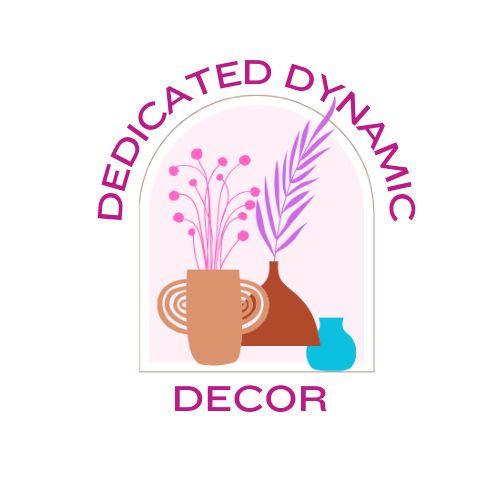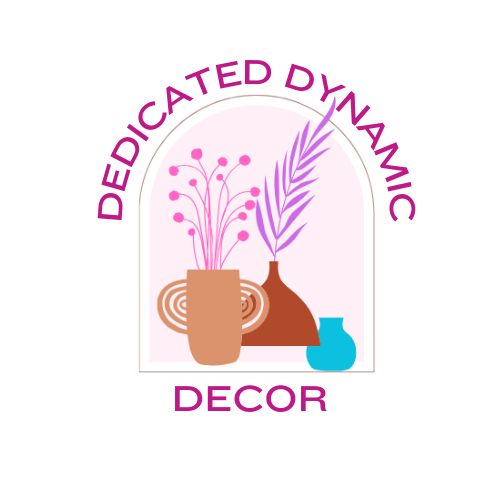Sustainable Home Decor: Eco-Friendly Tips for a Stylish Home
Sustainability is no longer a trend; it’s a lifestyle that resonates with the growing concerns of our planet’s health. And while many of us are increasingly aware of the impact of our choices, making eco-friendly decisions at home can sometimes feel daunting, especially when it comes to something as personal as interior design. But fear not, for designing a stylish home that’s kind to the Earth is not only possible; it’s also incredibly rewarding.
This guide is crafted for the modern homeowner, the forward-thinking interior designer, and anyone looking to infuse a little green into their living spaces. From materials to lighting, furniture choices to waste reduction, each aspect of your home decor can be tweaked to reduce your carbon footprint and look fabulous in the process.
Eco-Friendly Materials
When sprucing up your living space, the first place to go green is by looking at what your decor is made of. Opting for materials that are gentle on the environment, such as these sustainable options, can drastically change the impact of your home on the planet.
Using Recycled Materials
In a world where waste is a growing concern, what could be cooler than actual trash turning into treasure? Surprisingly lovely and durable, recycled materials in home decor are versatile and innovative. From glass countertops made from old beer bottles to rugs woven from repurposed fishing nets, the possibilities are as large as the need for recycling itself.
Sustainable Wood Options
The classic charm of wood can never be replaced, but the question of sustainability often follows hardwood options. Thankfully, sustainable woods like bamboo, mango wood, and reclaimed timber are gaining popularity for their aesthetics and their eco-credentials. Bamboo, for example, is a fast-growing grass that is ready for harvest in just four years, compared to the decades traditional hardwoods require.
Non-Toxic Paints and Finishes
Your walls say a lot about your home, and they can say just as much about your commitment to living green. Non-toxic, low-VOC (volatile organic compounds) paint is an eco-conscious and health-friendly alternative to standard wall paints. Natural pigments are also a vibrant way to color your living space with the assurance that they are benign to the environment.
Sustainable Furniture Choices
Furniture is the backbone of interior design, and it speaks volumes about your personal style. Choosing eco-friendly options doesn’t mean sacrificing taste. Consider the following tips to decorate your home with stylish sustainability in mind.
Upcycling and Repurposing
The art of taking old or discarded materials and transforming them into something new has been a staple of the hip-and-happening design world. Think turning an old suitcase into a coffee table, or transforming wooden crates into shelving. The beauty of upcycling is that no two pieces are alike, guaranteeing that your home will be as unique as it is green.
Shopping from Eco-Conscious Brands
Fortunately, many furniture makers have heeded the call to go green, and there is now a variety of brands offering a range of beautiful furniture made with the environment in mind. Whether it’s through the use of sustainable materials, energy-efficient production, or dedication to ethical labor practices, these brands are paving the way for a more sustainable interior landscape.
Second-Hand and Vintage Furniture
The greenest furniture is the one that already exists. Scouring second-hand stores, antique markets, or online resale platforms can yield one-of-a-kind finds that not only reduce the environmental impact but also tell a story. The vintage couch that once graced a Parisian apartment, the mid-century modern sideboard, or that quirky lamp from the 70s will add character and history to your home.
Energy-Efficient Lighting and Appliances
Lighting and appliances play crucial roles in providing comfort in our homes, but they also consume vast amounts of energy. By making conscious choices, you can significantly reduce your home’s energy consumption without compromising on style or convenience.
LED Lighting
LED (light-emitting diode) lights have revolutionized the lighting industry, offering energy savings of up to 80% over traditional bulbs. But LED lights don’t just save energy; they come in a wide array of shapes and colors, making them perfect for any style of home. From filament bulbs for that industrial look to recessed ceiling lights for a modern aesthetic, LED lighting ensures that style and sustainability go hand in hand.
Energy-Efficient Appliances
The heart of an eco-friendly kitchen lies in its appliances. Energy Star-rated refrigerators, stoves, and dishwashers are not only kinder to the environment, but they also help lower your utility bills. When shopping for new appliances, look for the Energy Star label, which represents the standard for energy efficiency.
Smart Home Technology for Energy Conservation
The future of energy efficiency is in smart home technology. With the ability to automate and optimize energy use, smart technology can help you reduce your carbon footprint and give you greater control over your home environment. Whether it’s a thermostat that learns your habits and adjusts the temperature accordingly, or smart plugs that cut off power to devices in stand-by mode, these innovations are both environmentally savvy and stylishly cutting-edge.
Indoor Plants and Natural Elements
Bringing the outdoors in can do more than make your home look beautiful; it can also contribute to your well-being and the health of the planet.
Benefits of Indoor Plants
Indoor plants not only add a splash of color and life to your home, but they also improve air quality by removing toxins. They can function as natural humidifiers and air purifiers, and some studies have even suggested that they can improve mental health. From the majestic fiddle-leaf fig to the low-maintenance snake plant, there’s a myriad of options to green up your space.
Incorporating Natural Elements like Stone, Wood, and Bamboo
Natural elements like these carry an earthy elegance and a timeless appeal. A granite countertop can last a lifetime, a well-crafted wooden console table can be passed down through generations, and bamboo furniture can bring a tropical touch to any room. By bringing these elements into your home, you’re not only creating a stylish environment but also taking a step towards a more sustainable future.
Eco-Friendly Textiles and Rugs
The textiles and rugs in your home can be as stylish as they are sustainable. Organic cotton, linen, and hemp are all excellent choices for bedding, upholstery, and drapery. When it comes to rugs, natural fibers like jute, seagrass, and wool make durable and eco-friendly options.
Waste Reduction and Recycling
Even the most well-intentioned homes can generate waste, but it’s how we deal with that waste that makes all the difference.
Proper Waste Management
Understanding the local waste management system is the first step to reducing your household’s impact. Separating recyclables, using composting bins for organic waste, and repurposing items before they’re thrown away are all ways to ensure that waste is managed in a way that’s as sustainable as possible.
Recycling and Upcycling Projects
Recycling is a familiar concept, but upcycling takes things a step further. DIY projects like turning old window frames into wall art, or repurposing wine bottles as hanging planters, not only keep items out of landfills but also give them a new lease on life. These creatively green projects can be a fun way to spend an afternoon and add a personal touch to your home.
Composting Organic Waste
Composting is nature’s way of recycling, turning kitchen scraps and yard waste into nutrient-rich soil. A countertop compost bin can make composting a breeze, even for those without a yard. The resulting “black gold” can then be used to nourish your indoor and outdoor plants, closing the loop on your home’s organic waste.
A Green Home Is a Stylish Home
Through these eco-friendly tips, it’s clear that sustainability and style can harmoniously coexist. The key to sustainable home decor is to make small changes that align with your personal values and aesthetic preferences. Whether you’re updating your lighting fixtures, shopping for new furniture, or simply looking for ways to reduce waste, every step towards a greener home is a step in the right direction.
By making conscious choices in our interior design, we not only create a home that reflects our care for the environment but also one that inspires others to follow suit. Remember, the most beautiful homes are the ones that are lived in and loved, and there’s nothing more stylish than a home that respects our planet’s precious resources.





